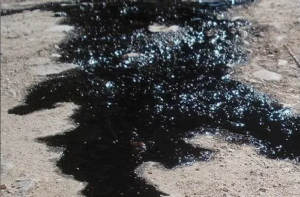First appearing in 1986 on a highway between the city of Caracas and its airport, La Mancha Negra, meaning literally a black stain, began as an approximately 50-yard (46 meter) long smudge, seen by highway workers who were resurfacing the road with asphalt concrete. Ultimately the spot grew to cover about an 8 mile (13 km) stretch. In 1991 it was widely reported that the slippery goo had caused over 1,800 deaths and countless other injuries. So what is it and is it still there today?
Many hypotheses have been proposed over the years as to the cause of La Mancha Negra, such as that it’s the result of raw sewage from slums that line the road, with the idea being the sewage runs downhill and under the asphalt where it mixes with the compounds in the road, breaking it down and producing the slippery, chewing gum like substance. Another popular theory is that oil and other fluids from old, rickety cars produce the goo when mixed with the dust of the roadway. Conspiracy theorists proposed it’s an intentional, regular sabotage by certain political powers to turn the public against the government leaders.
Authorities reportedly tried a number of remedies in the mid-1990s to remove the goo, including pressure washing it with detergents and simply scraping the goo off in layers. All attempts to get rid of the substance were reportedly in vain, though it’s noted that each attempt made a hefty profit for the company in charge of the removal of the substance and there was some question as to how hard they were actually trying.
The persecution of Christians, January 2024: “Killed civilians, raped girls & looted homes” – Report
As a last ditch effort, authorities finally decided to dump pulverized limestone on the goo to “dry it up”. It seemed to work for a while, although it produced an unwanted consequence – the limestone was so dusty that it supposedly severely hurt the air quality along the road for local residents for a while after application.
Read more: Today I Found Out
Ask me anything
Explore related questions





